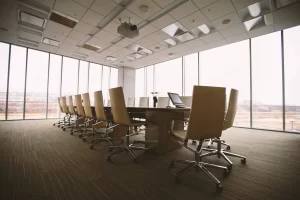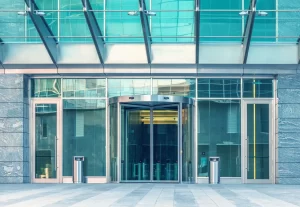
Title: Office Furniture Trends in the Big Cities across the United States: Evolving Workspaces in a Post-COVID Era
Introduction:
The landscape of office spaces has undergone a significant transformation in recent years, with catalysts like the COVID-19 pandemic accelerating changes that were already in motion. As we enter the year 2023, it is essential to examine the evolving trends in office furniture, taking into account the impact of COVID-19 and the subsequent rise of remote work, as well as the gradual return to traditional office environments. This article explores how the office furniture design and dealer industry is adapting to meet the changing needs of a dynamic workforce.
- The Impact of COVID-19 on Office Spaces:
The outbreak of the COVID-19 pandemic in early 2020 necessitated a widespread shift to remote work, prompting a reevaluation of office spaces and their functionality. Over the course of the past three years, office furniture design has adapted to accommodate the increasing importance of home offices while simultaneously preparing for a return to traditional office settings.
- Evolution of Office Space:
The concept of flexible and adaptive workspace design has gained immense traction in recent years, and this trend has accelerated due to COVID-19. As the lines between home and office become blurred, office furniture has become more versatile and modular, offering ergonomic solutions that cater to varying work environments. We have witnessed the rise of multifunctional furniture that can effortlessly transform between office, relaxation, and collaborative spaces.
- The New Era of Remote Work and Return to the Office:
With remote work becoming more prevalent, office furniture trends have pivoted towards providing functional and ergonomic solutions for the home office. Height-adjustable desks, comfortable seating, and acoustic privacy screens have become essential offerings. As individuals return to traditional office settings, hybrid work models are being adopted, leading to transitional spaces aimed at fostering collaboration and social interaction.
- Shifts in Office Furniture Design:
The office furniture design industry, cognizant of the changes in work dynamics, has been reimagining traditional layouts with a greater focus on employee well-being and productivity. Sustainability and environmentally conscious design choices have gained prominence, with manufacturers incorporating eco-friendly materials and practices. Ergonomic furniture has become an expectation rather than a luxury, ensuring optimum comfort and health for employees.
- The Rise of Collaborative Spaces:
The pandemic has reminded us of the importance of face-to-face collaboration and human interaction. In response, office furniture trends are leaning towards creating spaces that foster teamwork and creativity. Open-plan layouts with flexible furniture arrangements, breakout areas, and shared meeting spaces are gaining popularity in big cities across the United States. Such design elements promote cooperation and allow for agile work practices.
Conclusion:
As the United States navigates the post-COVID era, the office furniture industry is continually adapting to address the evolving dynamics of the modern workplace. The past three years have seen remarkable changes in office space design, driven by the pandemic-induced remote work phenomenon. As the workforce begins to return to traditional office environments, flexibility, ergonomics, collaboration, and sustainability will remain key considerations in office furniture trends. The industry’s ability to anticipate and respond to changing demands will shape the workspace experiences of countless employees in the years to come.





